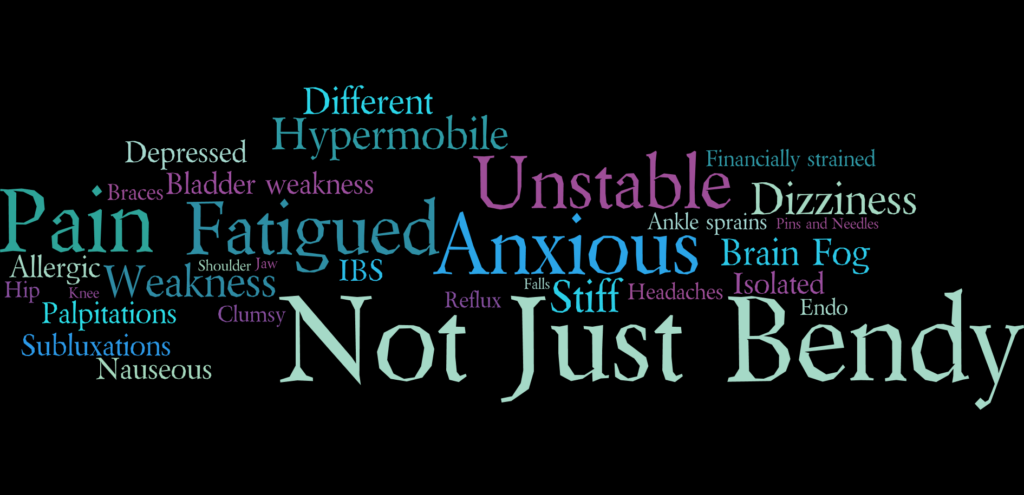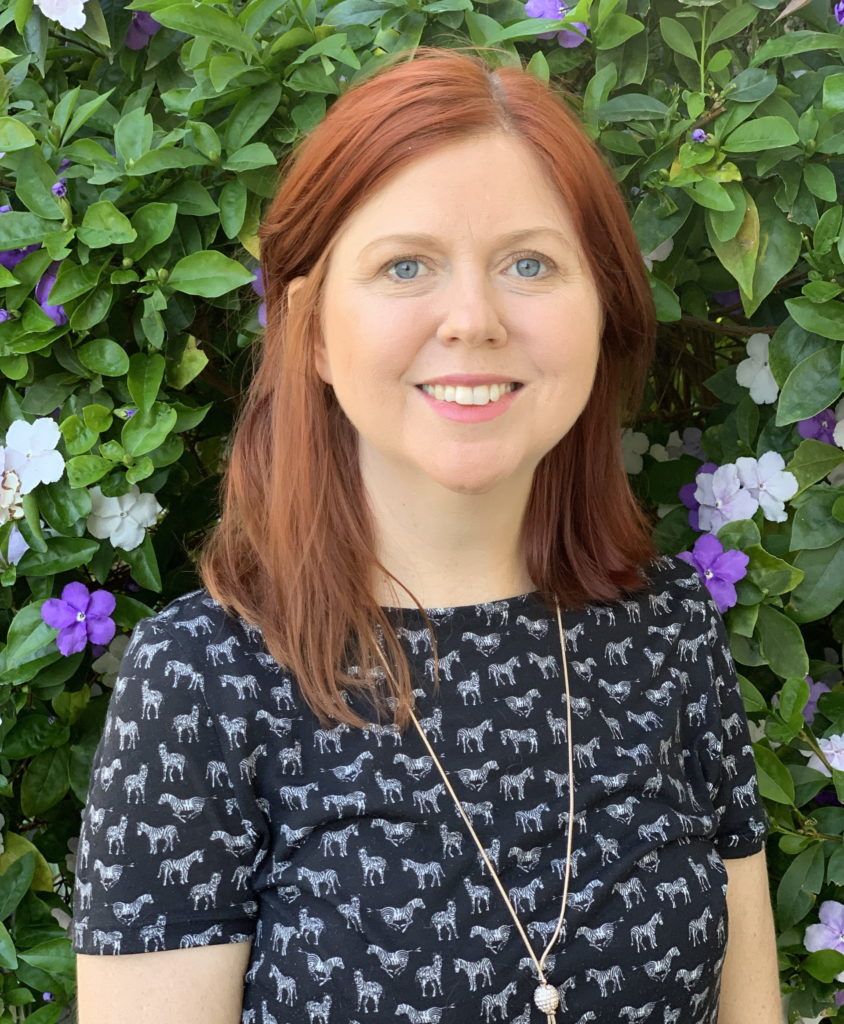
When I meet people socially at a BBQ and they ask me what I do, I take a deep breath as I know it is going to be an interesting conversation. I am the founder of a physiotherapy practice in Brisbane called Not Just Bendy Hypermobility Services. All our physiotherapists have a special interest in complex hypermobility, including Hypermobile-Ehlers Danlos Syndrome and Hypermobility Spectrum Disorder – some of them even have these conditions themselves.
I would like to answer a few common questions I am asked socially about hypermobility and by the end of the article you will understand why the practice is called Not Just Bendy Hypermobility Services.
What is hypermobility?
The term hypermobility is used to describe a person who has more than the usual amount of movement in a joint. This is present in around 20% of the population. For many people having increased joint flexibility is an advantage for some sports including swimming, tennis and gymnastics.
Collagen is the building block of connective tissue and there are several different types of collagen – some are firmer and some types are stretchier (similar to how different types of rubber bands have different stretchiness). It is thought that hypermobile individuals have a higher proportion of the stretchier collagen in their ligaments. This can allow the joints to move through an increased range of motion.
Hypermobility is generally assessed with the Beighton Criteria, which is explained here:

If you are an adult and you score 5 or higher then you are considered hypermobile – for children it is 6 or higher. It is important to remember that not everyone with hypermobility will have issues because of it – in fact many of our Olympic swimmers and track & field athletes are hypermobile.
Some of those with hypermobility encounter pain and injury associated with increased movement and if this pain becomes long lasting and in multiple areas then they can be diagnosed with Hypermobility Spectrum disorder. As the name suggests it is a spectrum from generally coping with a normal lifestyle with occasional pain to quite severely affected.
Connective tissue/collagen is not only present in your joints/ligaments but also in many other parts of the body. This is why, other issues can be associated with hypermobility. Issues can include: digestive issues (IBS, reflux, constipation, nausea, bloating etc), circulatory issues (dizziness, brain fog, racing heart, fainting), sleep issues, anxiety/depression, bladder issues (frequency, loss of urine), hormonal issues (painful/heavy periods, endometriosis), frequent bruising, stretch marks and clumsiness.
When there is a family history and other specific characteristics then a medical specialist can diagnose Hypermobile-Ehlers Danlos Syndrome https://www.ehlers-danlos.com/eds-diagnostics/. Incidence of Hypermobile-Ehlers Danlos Syndrome is estimated to be as high as 1% of the population.
Yet despite this, Hypermobility Spectrum Disorder and Hypermobile-Ehlers Danlos Syndrome are both generally poorly managed and poorly diagnosed even in Australia.
If hypermobility is so common why should we care? If it is that common and normal why should we bother to do anything about it anyway?
My answer to that question is – heart disease and diabetes are very common – but we don’t ignore those conditions. Prevention and management are offered to those with heart disease and diabetes and in the same way those with Hypermobility Spectrum Disorder / Hypermobile-Ehlers Danlos Syndrome deserve fast diagnosis, understanding and management.
At Not Just Bendy Hypermobility Services in Brisbane, Australia, we receive referrals from medical specialists who have recognised that hypermobility should be assessed and managed. This include Rheumatologists, Geneticists, Cardiologists, GPs, Sports Physicians and Pain Specialists. We also see many patients that find us through online support groups and google searches. With our new patients we do a specific screening assessment to assess if hypermobility is present (or was present in the past) and screen for and explain the theorised linkages to some other common conditions.
We then explain why all these things seem to occur together with hypermobility. It is one of the proudest parts of my life – when I help to put all the pieces of the puzzle together for people. It is a really significant moment for many and I must admit sometimes a get a chill down my spine when the penny drops for them. Then together we can start to put a plan together on how to approach things going forward.
Back at the BBQ by now the chat has gone one of two ways – either my companions eyes have glazed over and they are trying to get away from me or the penny has dropped for them and they say “That’s just like me,” or “That’s just like my sister/mother/friend.” Who knows? Maybe the same thing has happened to you.
What can physiotherapy do to help those with Hypermobility Spectrum Disorder / Hypermobile-Ehlers Danlos Syndrome?
I am glad you asked this! There is so much that a physiotherapist that understands hypermobility can offer. Even though the ligaments are a little extra stretchy, we all have another wonderful system known as Muscles which support the joints and provide stability and support to the deeper ligaments. Muscles are the key to management/improvement with Hypermobility Spectrum Disorder/Hypermobile-Ehlers Danlos Syndrome.
I will list a few things we provide at Not Just Bendy Hypermobility Services:
- Pain management techniques including safe stretches, postural changes, and massage gadgets.
- Deeper “stability/postural” muscle retraining to reinforce the ligaments and provide support to the joints.
- Retraining of simple movements such as getting out of a chair, standing, walking and balancing on one foot to use more efficient postural patterns. Hypermobile individuals often use excessive muscle gripping/stiffness to hold themselves rigid which can actually be very tiring and may increase pain. Learning to use the right muscles for the right task can be challenging but worthwhile.
- Strength and conditioning training including modified pilates and the development of safe, paced, gym-based programs.
- Problem solving of complex conditions and coordination with other medical professionals with a special interest in the area.
- Assistance with dislocation plans, correspondence to school, pacing advice, joint protection education and brace/taping advice.
Due to the complexity of each individual with Hypermobile-Ehlers Danlos Syndrome it is important to take a long-term view of rehabilitation. We are available for regular review or less frequent treatment, as everyone’s circumstances are unique. We prefer to start with two one-hour sessions for a full assessment and to develop a management plan. Most of our clients are complex and have seen multiple physios/medical professionals in the past. We offer telehealth for patients across Australia and home visits for those in Brisbane.
When you call Not Just Bendy Hypermobility Services to make an appointment ask to see one of the growing Not Just Bendy team – Sharon Hennessey, Dr X. Chen, Marlisa Kwan, Belinda Breust, Lucy Yan, April Meggs, Maria Yee and Elissa Mak. Our practice is located in Eight Mile Plains, Brisbane. Be sure to ask for Not Just Bendy when you are booking your appointment for hypermobility Brisbane. Contact Us.
Follow us on facebook: https://facebook.com/notjustbendy

This blog was written by Sharon Hennessey, the founder and principal physiotherapist at Not Just Bendy Hypermobility Services Physiotherapy clinic in Brisbane, Australia. Sharon is a dynamic Physiotherapist with over 23 years’ experience and a special interest in treating those with hypermobility.
